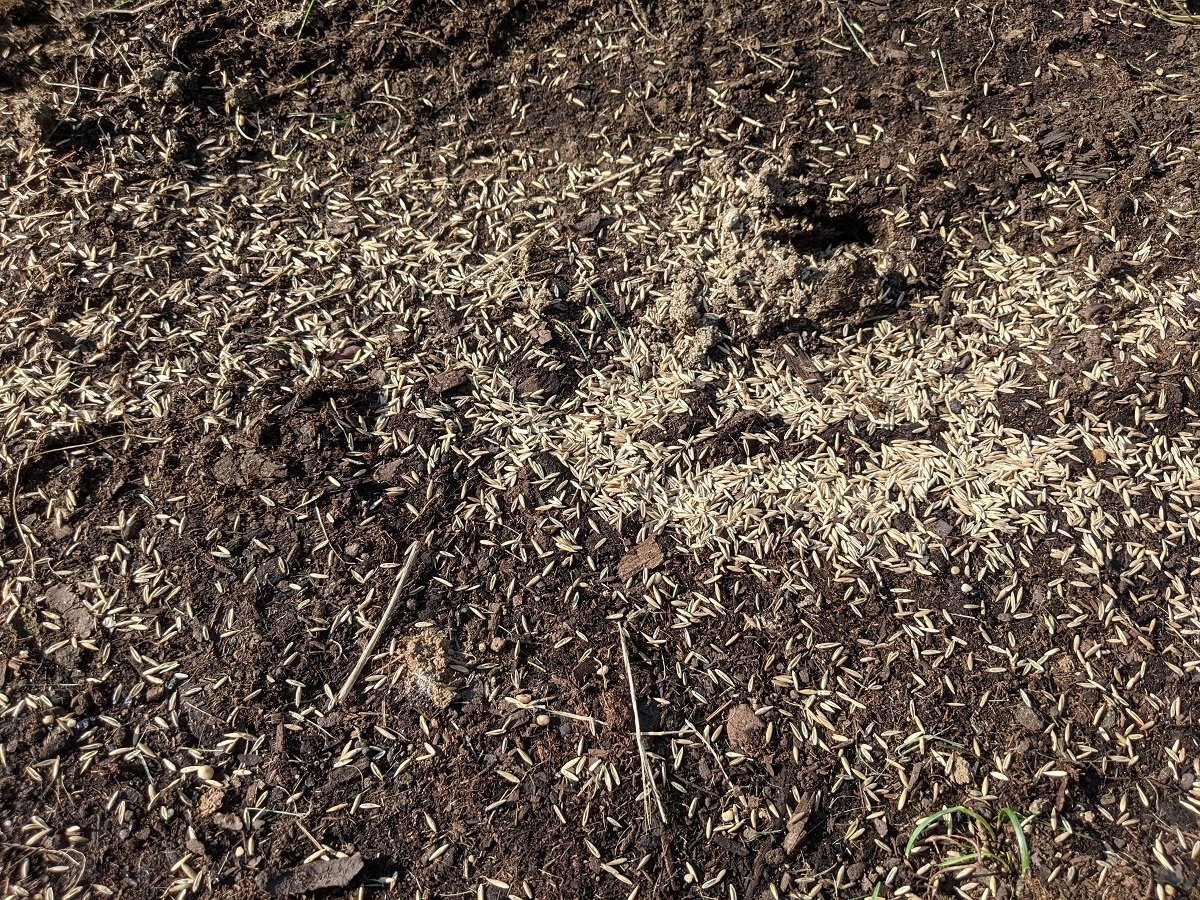Why Aeration & Overseeding Are Can't-Miss Fall Lawn Care Projects
If it’s fall, your lawn could probably use aeration and seeding. Add it to your fall fun list, right up there with a visit to the pumpkin patch and sneaking all the mini Snickers out of your kids’ Halloween candy.
Aeration, combined with overseeding, gives your lawn a much-needed one-two punch. The aeration loosens your compacted soil, letting in crucial air and water.
Then, all those perfectly spaced holes the aerator leaves behind are perfect homes for a fresh batch of grass seed to help fill in bare spots and make your lawn thicker and healthier.
Aeration and seeding seem simple, but their benefits are numerous:
- Lawn aeration basics
- How aeration helps fertilizer work better
- Aeration and dethatching
- Aeration helps battle weeds
- Aeration's impact on soil health
- Why is fall so great for aeration and seeding?
- Lawn seeding facts
Fall is the perfect time for aeration and seeding, with cool temperatures, free watering from rain showers, and enough time for new grass to get going before winter sets in.
You can get aeration and overseeding from Lawn Buddies through mid to late October.
First Up: Lawn Aeration Basics
Aeration uses a machine to pull out tiny cores of soil from your lawn, allowing water and oxygen to get to the roots.
Maybe your lawn started out with loose, fluffy soil, but over time it gets packed down and compacted.
Or maybe your soil started out compacted, if it contains a lot of clay.
When the soil becomes compacted, the lawn cannot breathe, its roots cannot take in water or nutrients, and it struggles and becomes susceptible to weeds and diseases.

Aeration fixes that. It does more than help air and water reach your lawn’s roots.
Pair it with seeding, as people often do, and you get the added bonus of new grass to help rejuvenate your lawn. Maybe you’re frustrated by thin or bare spots where your lawn is struggling or recovering from a fungus or disease. Perfect timing for a batch of fresh grass seed.
(Also, don’t be confused by the term “overseeding.” It’s just seeding — the act of spreading seed over your yard to grow new grass.)
The Big Benefits of Aeration and Seeding
Why add aeration and seeding to your fall to-do list?
From fertilizer performance to the health of your lawn's soil, there are plenty of reasons to aerate and overseed each fall.
Fertilizer Works Better
Uncompacted soil allows more than just air and water to reach beneath the surface.
When the soil is looser and airier, fertilizer can easily reach the roots of your lawn and boost its health.

Compacted, thatch-filled lawns can prevent granular fertilizers from reaching the grass's root system. This leads to wasted material and money, and can even cause excess material runoff, which harms waterways.
Aeration Breaks Down Thatch
You don’t want too much thatch. Thatch is a layer of dead grass and stems between your grass blades and the soil.
When lawn aeration removes plugs from the thatch, it helps it decompose, allowing oxygen, nutrients, and moisture to reach the roots.
Fewer Weeds!
Can we all agree we hate weeds?
Guess what weeds hate? A healthy lawn.
If you use aeration and seeding as part of a comprehensive lawn care program, you should see fewer dandelions, clover and that dreaded crabgrass.
A healthy, thick lawn crowds them out.
Aeration Boosts Your Soil Health
Maybe you don’t lay awake at night worrying about your soil health, but give us a minute.
The health of your grass depends on healthy soil. It’s where your lawn gets the nutrients it needs to grow. And aeration improves your soil.
When your soil is healthy, it’s full of stuff that sounds gross, but your lawn loves, from wiggly worms to fungi to nutrient-rich microbes that provide nourishment.
None of these can thrive in compacted soil, so your poor lawn will struggle to get the nutrients it needs.
Aeration loosens it up.
Aeration in Fall: Why Wait Until Season's End?
If you just want lawn aeration, we can do that in spring or fall, but if you opt for the smart combo of aeration plus overseeding, fall is the season.
Why is lawn seeding a great task for fall?
The weather in Idaho is nice and cool in the fall, which is perfect for germinating and growing new grass seeds.
Fall is often rainy. Free watering!

Fewer weed seeds are blowing around in the fall that can settle into the aeration holes and grow.
Lawn aeration and seeding in the fall give the new grass time to grow and store nutrients before it becomes dormant for the winter.
Lawn Seeding Facts: Seed Matters
What kind of grass seed is best here in Idaho?
Choose a mix of 80 percent Kentucky bluegrass and 20 percent perennial ryegrass.
There’s a lot of beauty in blends. Unlike a single-variety grass seed, blends give you the benefits of more than one variety or species.
Blends are also more likely to withstand diseases than single-species lawns, because of their genetic diversity.
Using a blend reduces the chance of one grass type being wiped out by an insect or disease problem.
Different grass types in Idaho also have different traits. One type may do better in drought conditions, and the other may be more disease-resistant.
Let Lawn Buddies Keep Your New Lawn Healthy
Aeration and seeding are a great kick-start for a healthy lawn.
But don’t stop there. A proactive, comprehensive lawn care program is designed to nourish your lawn throughout the year with everything it needs to grow healthy and strong.

Choose lawn care and landscaping services in Boise and Idaho Falls that bundle your yard’s most-needed treatments into one convenient, no-fuss plan.
Fertilizing, weed control, grub control. Done.
We’ve got your back.
Got a few minutes? That’s all you need to get started. Call us at (208) 656-9131 or fill out the form on this page. Then, you can kick back and relax in your healthy, thriving yard.


